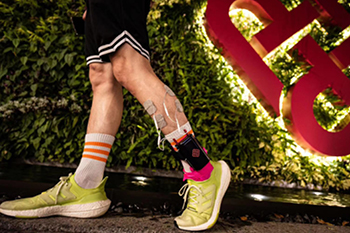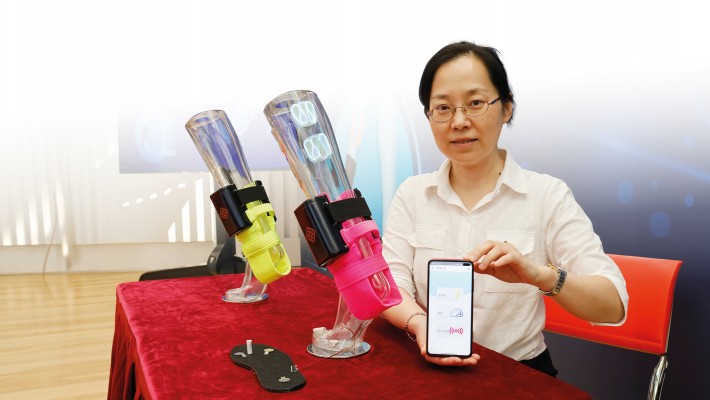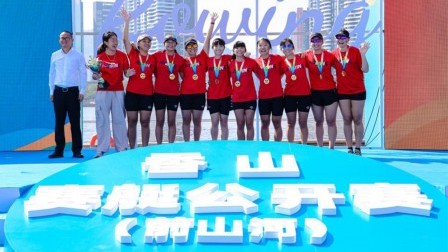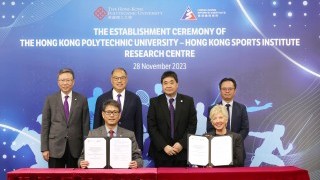Multimodal robot leads the way in stroke rehabilitation
Other Articles
Stroke is a pressing issue in Hong Kong, with around 50,000 new cases reported annually and 85% of patients experiencing impaired physical mobility to varying degrees. Timely and routine rehabilitation exercises are crucial for restoring mobility and alleviating post-stroke symptoms. However, the overwhelming demand for outpatient rehabilitation services means stroke patients may not have access to necessary care.
To address this challenge, Dr Hu Xiaoling, Associate Professor of the Department of Biomedical Engineering, has led an interdisciplinary research team in developing the first-of-its-kind Mobile Ankle-foot Exoneuromusculoskeleton. This multimodal robot is designed to aid ankle-foot rehabilitation in stroke patients with hemiplegia. Powered by Internet of Things (IoT) technology, it enables telerehabilitation, allowing patients to exercise at home while therapists monitor their progress remotely. This innovation provides a solution for stroke patients in accessing timely rehabilitation services.
The Mobile Ankle-foot Exoneuromusculoskeleton integrates exoskeleton, soft pneumatic muscles, tactile sensory feedback, and neuromuscular electrical stimulation technology. It corrects foot drop and foot inversion, improves gait and balance during walking and contributes to rehabilitative neuroplasticity in the long run. By automatically detecting a patient’s gait event, such as standing state, heel strike, heel off, and toe-off, the device provides mechanical support from the exoskeleton and soft pneumatic muscles, vibration tactile feedback, and neuromuscular electrical stimulation, assisting patients in standing firmly, balancing plantar pressure, exerting propelling force while walking, and improving foot drop.
Clinical studies conducted by Dr Hu's research team in collaboration with several local and Mainland hospitals and rehabilitation clinics demonstrated the device’s effectiveness. It was found to be 40% more effective in stroke rehabilitation than applying external mechanical forces alone. The 12 patients who completed a 1.5-month training programme comprising 20 one-and-a-half-hour sessions saw improvements in ankle dorsiflexion and foot inversion.
The Mobile Ankle-foot Exoneuromusculoskeleton has set a new standard for stroke rehabilitation care in local and Mainland hospitals and rehabilitation clinics, and the research team intends to commercialise the product soon.
Advantages over existing solutions:

|






